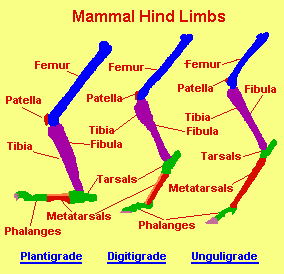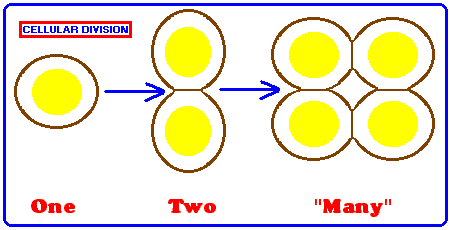page 10
(The Study of Threes)
http://threesology.org
Visitors as of 11/18/2019
| Pages in the Biological & Physiological 3s Series: | ||
| B/P 3s pg. 1 | B/P 3s pg. 2 | B/P 3s pg. 3 |
| B/P 3s pg. 4 | B/P 3s pg. 5 | B/P 3s pg. 6 |
| B/P 3s pg. 7 | B/P 3s pg. 8 | B/P 3s pg. 9 |
| B/P 3s pg. 10 | B/P 3s pg. 11 | The Devil's Advocate and 3s Research |

CBD Oil for Anxiety
Three actions of fluoxetine (Prozac) are presumed to be linked to its ability to inhibit the neuronal re-uptake of serotonin:
- Antidepressant, Depression- For the symptomatic relief of depressive illness.
- Antiobsessional, Obsessive-Compulsive Disorder- Fluoxetine has been shown to significantly reduce the symptoms of obsessive-compulsive disorder in double-blind,placebo-controlled clinical trials. The obsessions or compulsions must be experienced as intrusive, markedly distressing, time-consuming, or interfering significantly with the person's social or occupational functioning.
- Antibulimic, Bulimia Nervosa- Fluoxetine has been shown to significantly decrease binge-eating and purging activity when compared with placebo treatment.
Treatment-Emergent Adverse Experience Incidence (>=5%) in Placebo-Controlled Clinical Trials for:
- Depression
- Obsessive-Compulsive Disorder
- Bulimia.
|
Percentage of Patients Reporting Event | ||||||
| Body System/Adverse Event | Depression | OCD | Bulimia | |||
| Fluoxetine | Placebo | Fluoxetine | Placebo | Fluoxetine | Placebo | |
| (N=1730) | (N=799) | (N=264) | (N=89) | (N=418) | (N=210) | |
| Nervous
headache nervousness insomnia somnolence anxiety tremor dizziness libido, decreased depression emotional lability |
20.3 14.9 13.8 11.6 9.4 7.9 5.7 - - - |
15.5 8.5 7.1 6.3 5.5 2.4 3.3 - - - |
32.6 14.4 29.6 17.1 13.6 9.1 13.3 11.4 8.0 - |
23.6 14.6 22.5 6.7 6.7 1.1 11.2 2.3 14.6 - |
30.1 10.8 33.1 12.7 16.3 13.7 11.4 5.9 10.1 2.7 |
26.9 5.2 15.0 7.1 11.1 2.0 5.4 0.9 16.4 7.8 |
| Digestive | ||||||
| nausea diarrhea dry mouth anorexia dyspepsia gastrointestinal disorder constipation flatulence |
21.1 12.3 9.5 8.7 6.4 - - - |
10.1 7.0 6.0 1.5 4.3 - - - |
26.5 18.2 12.1 16.7 9.9 5.7 4.2 3.4 |
13.5 13.5 3.4 10.1 4.5 1.1 6.7 5.6 |
29.7 7.5 9.9 8.8 10.7 5.7 4.8 - |
13.5 6.7 8.6 4.4 6.7 5.9 4.6 - |
| Skin and Appendages | ||||||
| sweating, excessive rash | 8.4 - |
3.8 - |
7.2 6.4 |
- 3.4 |
8.9 5.1 |
1.6 4.9 |
| Body as a Whole | ||||||
| asthenia flu syndrome back pain infection abdominal pain myalgia |
- - - - - - |
- - - - - - |
15.2 9.9 2.7 - 4.9 - |
10.1 6.7 5.6 - 11.2 - |
21.7 10.1 3.9 6.2 9.6 4.7 |
9.6 539 7.0 6.2 6.5 9.4 |
| Respiratory | ||||||
| upper respiratory
infection rhinitis pharyngitis sinusitis yawn |
7.6 - - - - |
6.0 - - - - |
- 22.7 10.6 - 7.2 |
- 23.6 9.0 - - |
- 23.0 11.1 5.7 11.1 |
- 29.1 5.5 6.9 0.8 |
| Cardiovascular | ||||||
| vasodilatation | - | - | 5.3 | - | - | - |
| Urogenital | ||||||
| menstrual
disorder dysmenorrhea urinary frequency urinary tract infection |
- - - - |
- - - - |
3.4 3.4 - - |
5.6 5.6 - - |
8.3 6.1 6.2 5.1 |
4.8 7.8 1.6 2.0 |
The newly identified phytochrome 3 mediates a fern's response to red light.
Article by: Tudor P Toma
Photosynthesis is optimized by orienting leaves and chloroplasts towards the light source, responses that are usually mediated by the blue-light receptors phototropin 1 (phot1) and phototropin 2 (phot2). In some ferns phototropism and chloroplast photo-relocation are also controlled by red light, but no photoreceptor mediating these red-light responses had been identified. In the January 16 Nature, Hiroko Kawai and colleagues at the Tokyo Metropolitan University, Japan, show that an unconventional photoreceptor mediates ferns responses to red light (Nature, 421:287-290, January 16, 2003).
Kawai et al. examined Adiantum capillus-veneris (including red-light aphototropic mutants) by mutational analysis and complementation. They observed that this fern expressed an unconventional photoreceptor, phytochrome 3 (phy3) — a chimera of the red/far-red light receptor phytochrome and phototropin. In addition, they showed that the phy3 receptor induced red-light phototropism and red-light chloroplast photorelocation.
"Because phy3 greatly enhances the sensitivity to white light in orienting leaves and chloroplasts we propose that the appearance of phy3 was a critical step for the proliferation of ferns, and has had an important role in the competitive success of past and present fern species under low-light canopy conditions," conclude the authors.
Links for the above article:
- T. Sakai et al., "Arabidopsis nph1 and npl1: blue light receptors that mediate both phototropism and chloroplast relocation," PNAS, 98:6969-6974, 2001. [PubMed Abstract]
- H. Kawai et al., "Responses of ferns to red light are mediated by an unconventional photoreceptor," Nature, 421:287-290, January 16, 2003.
Tokyo Metropolitan University --- http://www.metro-u.ac.jp/index-e.html ---
--- Red light receptor in plants ---
3 tests given for a particular experiment:
- (number combinations) Serial Sevens - a person (typically) counts backwards from a particular number such as 100, by sevens: 100 - 7 = 93, 93 - 7 = 86, 86 - 7 = 79...etc.
- (number combinations) Serial Threes - a person (typically) counts backwards from a particular number such as 100, by threes: 100 - 3 = 97, 97 - 3 = 94, 94 - 3 = 91...etc.
- (letter combinations) Word Retrieval (Verbal Fluency) - Simply stated, this refers to remembering words.
Abstract Rationale: It is known that glucose administration is capable of improving performance on tests of declarative verbal memory and non-mnemonic tasks requiring high "mental effort". At the same time, cognitively demanding tasks are associated with elevated heart rate, a response that could feasibly be part of a physiological mechanism serving to increase the delivery of glucose to active brain substrates.
Objective: The present placebo-controlled, double-blind, balanced, crossover study examined the interaction between glucose administration, cognitive performance and heart rate during three tasks of differing mental demand and somatically-matched control tasks.
Methods: The effects of a glucose drink on participants' performance on two serial subtraction tasks (Serial Threes and Serial Sevens) and a Word Retrieval (Verbal Fluency) task were assessed. Heart rates were monitored throughout the experiment, and participants rated each task in terms of its perceived mental demand.
Results: Serial Sevens was rated as the most mentally demanding task, followed by Word Retrieval, then Serial Threes. Glucose consumption significantly improved performance on Serial Sevens, with a trend for improved performance on Word Retrieval. Both Serial Sevens and Serial Threes were associated with significant heart rate elevation above that seen in somatically matched control tasks (ruling out the possibility that accelerated heart rate was due to peripheral mechanisms alone). Unexpectedly, participants in the glucose condition had higher heart rates during cognitive processing. Additionally, individuals whose baseline heart rates were below the median performed better on Serial Threes and Serial Sevens.
Conclusion: We suggest that supplemental glucose preferentially targets tasks with a relatively high cognitive load, which itself (through unknown mechanisms) mobilises physiological reserves as part of a natural response to such tasks. Furthermore, baseline heart rate and responses to cognitive demand and glucose administration may represent important physiological individual differences.
See also:
by Dave Kennedy and Andrew Scholey
The bottom line? Athletes can probably lower their susceptibility to staleness by keeping careful daily records of their quality of sleep and feelings of fatigue, stress, and muscle soreness on a seven-point scale. Normally, these ratings will settle at below 4 during the season - when an athlete is recovering well from workouts and staleness is not impending. However, when any of these ratings rise to around 5 or above for more than a few days, it may be wise for athletes to cut back on their training until they're 'in the threes' again. A return to ratings below 4 is a good sign that an athlete has recovered well from previous tough training and is now ready for more serious work.
In addition, the Queensland researchers felt that increases in feelings of fatigue and decreases in quality of sleep were particularly valid markers of impending staleness in the mid-season. These changes actually preceded staleness by SEVERAL WEEKS in the stale swimmers, giving athletes who monitor their sleep quality and fatigue ample time to reduce their training and avoid the overtrained state.
('Markers for Monitoring Overtraining and Recovery,' Medicine and
Science in Sports and Exercise, vol. 27(1), pp. 106-112,1995)
Owen Anderson
(Peak Performance Library)
Note: many people will exercise for threes days of the week and those engaged in a variety of personalized weight lifting exercises will use routines which involve 3-set and/or 3 repetition routines either as a specific or general rule-of-thumb such as, for example, running three days of the week.
Three general biochemical process have been genetically eliminated in E.coli K-12 strains used for cloning:
- Bacterial restriction modification systems have been removed.
- DNA recombination systems are modified to prevent rearrangements.
- Endonuclease activity has been mutated to increase plasmid yields.
Three types of naturally occurring bacterial plasmids have been exploited for molecular genetic applications:
- Virulence plasmids encoding bacterial toxins such as colicins (ColE1 plasmid ori is in cloning vectors).
- Conjugation plasmids (F plasmid is used to carry lacI gene and binding protein for M13 phage).
- Drug resistance plasmids (R plasmids have been a source of antibiotic resistance genes).
3 to 1 ratio of cloning vector properties: [Cloning vectors are DNA molecules that are used to "transport" cloned sequences between biological hosts and the test tube (e.g., from bacterial cells to test tubes to plant cells).]
- 1 of 3. Ability to promote autonomous replication.
- 2 of 3. Contain a genetic marker (usually dominant) for selection.
- 3 of 3. Unique restriction sites to facilitate cloning of insert DNA.
- 1 of 1. Minimum amount of nonessential DNA to optimize cloning.

3 different ways in which mammals stand and walk:
- Humans are Plantigrade, placing the heel as well as the toes on the ground.
- Dogs are Digitigrade, putting only their toes on the ground.
- Cattle & deer are Unguligrade, standing on hooves that have evolved from their ancestors' claws.
Image source:
The "triangular"-shaped arch of the human foot is a unique feature not found in other primates.
Tripartite body of acorn worms:
- A short conical proboscis.
- A narrow collar region.
- A long trunk.
- 3 commonly recognized external features found on various animals: Horns ~ Antlers ~ Tusks
- 3-patterned common grouping: Muscles ~ Tendons ~ Ligaments
- 3-patterned growth processes: Protosome ~ Mesosome ~ Metasome
- 3 types of integument (skin) glands: Eccrine ~ Apocrine ~ Sebaceous
- 3-patterned growth processes: Protocoel ~ Mesocoel ~ Metacoel
- 3 essential aromatic amino acids: Phenylalanine ~ Tryptophan ~ Histidine
- 3 muscle types: Smooth ~ Cardiac ~ Skeletal
3 forms of recognized malignant melanoma of the skin:
- Lentigo malignant melanoma
- Superficial spreading melanoma
- Nodular melanoma
3 types of tertiary neurosyphilis, which may occur alone or in combination:
- Meningovasculitis- Pathology: Infiltration of meninges and vessels by lymphocytes and plasma cells; may cause symptoms of meningitis or vascular occlusion.
- General Paresis- Pathology: Atrophy, loss of cortical neurons especially in frontal lobes, gliosis, proliferation of microglial cells (rod cells), perivascular lymphocytes and plasma cells. Spirochetes present in brain tissue.
- Tabes Dorsalis- Pathology: Inflammatory lesions involving meninges and vessels in subarachnoid space of dorsal nerve roots. Loss of axons and myelin in dorsal roots with Wallerian degeneration of dorsal columns. (T. pallidum absent in cord parenchyma.)
Cell division may be looked upon as a "3-step" process in terms of a One~ Two~ Many sequence:

(Those readers with a vision bent towards the imaginative may see a "0," one "8," and two "8's,"... which results (by way of addition) into 0, 8, 16,... 64, etc...)
3 basic nutrient categories: B-vitamins ~ Minerals ~ All other vitamins/non-vitamins
3 concentrations of Provitamin caroteniods:
- High Vitamin A and procarotenoids: 10,000- 76,000 I.U./100 grams
- Medium Vitamin A and procarotenoids: 1,000- 10,000 I.U./100 grams
- Low Vitamin A and procarotenoids: 100- 1,000 I.U./100 grams
3 gases used as an anesthetic:
- Nitrous oxide (N2O)
- Cyclopropane (C3H6)
- Oxygen (O2
| Smooth | Cardiac | Skeletal |
| Not striated | Striated | Striated |
| Spindle-shaped | Cylindrical | Cylindrical |
| Not branched | Branched | Not branched |
| Nucleus central | Nuclei central | Nuclei peripheral |
| No discs | Intercalated discs | No discs |
| Relatively involuntary | Relatively involuntary | Voluntary |
| Slow | Fast | Fast |
| Contraction not inherent | Contraction inherent | Not inherent |
| "Monads"? | Dyads | Triads |
Note: all of the data (except for the last three references) in the above table was adapted from information at the following site:
In skeletal muscle, as the T tubules pass each sarcomere they make very close contact with two terminal (lateral) cysternae (or sacs) on either side in a structure called a triad, while in cardiac muscle there is a dyad made of one T tubule and one terminal cysternum.
| CHARACTERISTIC | Type I | Type IIa | Type IIb |
| Diameter | Small | Intermediate | Large |
| Colour | Red | Red | White |
| Myoglobin | Much | Much | Not much |
| Shortening Speed | Slow | Intermediate | Fast |
| Myosin ATPase | Slow | Intermediate | Fast |
| Volume of SR (sarcoplasmic reticulum) |
Large | Large | Small |
| Metabolism | Oxidative | Oxidative | Glycolytic |
| Mitochondria | Many | Intermediate | Few |
| Glycogen | Low content | Intermediate | High content |
| Lipid Droplets | Many | Intermediate | Few |
| Capillaries | Many | Intermediate | Few |
Information adapted from:
3 percentages chemical composition of skeletal muscle:
- 75% of skeletal muscle is water
- 20% is protein
- 5% is inorganic salts and other substances, including: phosphates, urea, lactic acid, calcium, magnesium, phosphorus, enzymes, ions, lipids and carbohydrates
- 3 muscle divisions: Head ~ Belly ~ Tail
- 3 gluteus muscles: Maximus ~ Medius ~ Minimus
- 3 muscle fiber arrangements: Unipennate ~ Bipennate ~ Multipennate
3-part hierarchy of muscle structure organization & connective tissue wrappings:
- Epimysium envelopes whole muscle
- Perimysium envelopes fascicles
- Endomysium envelopes individual fibers
- 3 masseter muscle parts: Superficial ~ Intermediate ~ Deep
- 3 muscle heads: Biceps ~ Triceps ~ Quadriceps ("Quadricep" refers to Musculus Triceps Surae, the Plantaris is counted separately) {another 3:1 ratio}
- 3 muscle (contrasts) definitions: Superior/Inferior ~ Major/Minor ~ Posterior/Anterior
- 3 lateral vertebral muscles: Scalenus anterior ~ Scalenus medius ~ Scalenus posterior
- 3 peroneal/fibular muscles: Peroneus brevis ~ Peroneus longus ~ Peroneus tertius
- 3 general muscle attachment types: Superficial fascia ~ Deep fascia ~ Subserous fascia
- 3 eyelid muscles: Levator palpebrae superioris ~ Obicularis oculi ~ Corrugator supercili
- 3 extrinsic straight (eye) muscles: Lateralis rectus ~ Medialis rectus ~ Superior rectus
- Extrinsic eye muscles come from epaxial parts of 3 pairs of head myotomes (somitomeres); innervated by 3rd, 4th, and 6th cranial nerves.
- 3 parts of the eye: Iris~ Cornea ~ Pupil
- 3 orbicular muscle portions: Pars orbitlis ~ Pars palpebralis ~ Pars lacrimalis
- 3 color blindness types: Protanopia ~ Deuteranopia ~ Tritanopia
- 3 eyeball tissue layers: Sclera/Cornea ~ Uveal Tract ~ Retina
- 3 preotic myotomes of the eyes: Oculomotor ~ Trochlear ~ Abducens
- 3 eyeglass types: Monofocals ~ Bifocals ~ Trifocals
- 3 sights: Foresight ~ Sight ~ Hindsight
- 3 extra-sensory modes: 3rd eye (mind's eye) ~ 3rd ear ~ 3rd nose
- 3 common vision types: Far-sighted ~ Near-sighted ~ Regular-sighted
- 3 common references to eye discomfort: Dry ~ Gritty ~ Irritated
- 3 types of contact lenses available in Canada: Hard ~ Soft ~ Rigid Gas Permeable.
- 3 types of items that can collect due to contact lenses (whether daily or extended- wear): Bacteria ~ Dirt ~ Eye Secretions.
3 types of retinal detachments:
- The most common type occurs when there is a break in the sensory layer of the retina, and fluid seeps underneath, causing the layers of the retina to separate.
- The second most common type occurs when strands of vitreous or scar tissue create traction on the retina, pulling it loose.
- The third type happens when fluid collects underneath the layers of the retina, causing it to separate from the back wall of the eye.
Expression of many skeletal muscle-specific genes depends on TEF-1 (transcription enhancer factor-1) and MEF2 transcription factors. In Drosophila, the TEF-1 homolog Scalloped interacts with the cofactor Vestigial to drive differentiation of the wing and indirect flight muscles. Three mammalian vestigial-like genes, Vgl-1, Vgl-2, and Vgl-3, have been identified that share homology in a TEF-1 interaction domain. Vgl-1 and Vgl-3 transcripts are enriched in the placenta, whereas Vgl-2 is expressed in the differentiating somites and branchial arches during embryogenesis and is skeletal muscle-specific in the adult...
Updated Posting: Thursday, 6th February 2020... 8:33 AM
Latest Update: Friday, February 24th, 2023... 11:41 AM
Herb O. Buckland
herbobuckland@hotmail.com